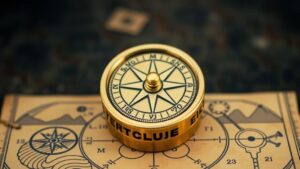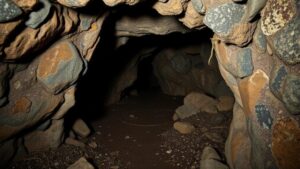Using Ancient Astrology References Found in Treasure Map Designs
Using Ancient Astrology References Found in Treasure Map Designs
Ancient astrology, a system grounded in the observation of celestial bodies and their influence on earthly events, has had a profound impact on various aspects of human civilization, including navigation and treasure hunting. This article explores how references to astrology have been intricately woven into treasure map designs, revealing clues about their usage and significance. By examining the historical context, cultural interpretations, and practical applications, we can gain a deeper understanding of these intriguing artifacts.
The Historical Context of Astrology in Navigation
Astrology has been a part of human culture for millennia, with roots tracing back to ancient Mesopotamia and Egypt. e civilizations utilized celestial navigation not only for agricultural purposes but also for trade and exploration. For example, the Babylonians developed a sophisticated understand of the heavens, charting constellations that guided sailors. This ancient knowledge transitioned into medieval Europe, where astrology became essential for navigation.
As treasure maps began to surface during the age of exploration, they often incorporated astrological symbols reflecting the maps creators. One notable example is the treasure map attributed to Captain William Kidd, which features astrological signs aligned with territories marked for hidden booty. Such integration draws parallels between the navigational techniques used by explorers and the predictive qualities of astrology.
The Symbolism of Celestial Bodies in Treasure Maps
Treasure maps that incorporate astrological references often feature key symbols–planets and constellations–that carry deep symbolic value. Each celestial body is associated with particular traits and meanings. For example:
- Sun: Represents clarity, success, and realization. Its alignment on a map may indicate optimal times for treasure hunting.
- Moon: Associated with intuition and the subconscious. Its phases may provide insight regarding when to seek treasures.
- Mercury: Symbolizes communication and intelligence, possibly referring to routes and pathways crucial for finding treasure.
Each symbol can offer potential guidance concerning not only the treasures location but also the timing of its retrieval, suggesting that treasure maps were not just navigational aids but also instruments of astrological significance.
Several documented cases illustrate the astrological dimensions found within treasure maps.
1. Atocha Treasure Map
The famous Atocha treasure, lost in a 1622 shipwreck, was sought using a map created incorporating astrological elements. The map featured celestial alignments guiding treasure seekers toward the wrecks location. Marine archaeologists studying the site noted that successes in finding sections of the treasure corresponded with significant astronomical events, such as equinoxes and solstices, potentially lending credence to the astrological interpretations of the map.
2. Oak Island Mystery
Another intriguing case is the Oak Island treasure in Nova Scotia. The site is known for its elaborate system of tunnels and booby traps, and various treasure maps often include astrological signs. Researchers have suggested that these symbols indicate not just physical geography but also the astrological timing of when the treasures could be accessed safely. interaction of local myths and celestial alignments indicates a sophisticated understanding of how astrology played a role in the treasures creation and concealment.
The Practical Applications of Astrology in Treasure Hunting
Utilizing astrology in treasure hunting can provide practical advantages, especially when it intersects with skilled navigation techniques. Combining celestial navigation with astrological timing can enhance the probability of success in treasure finding. Here are a few actionable strategies:
- Charting Celestial Events: Establish a timeline based on astrological events such as full moons or equinoxes, which many treasure seekers believe can energize discovery.
- Using Star Clusters for Navigation: Familiarize with celestial patterns to navigate during nighttime expeditions, particularly when seeking hidden locations correlated with astrological references.
- Documenting Personal Birth Charts: Align personal astrological factors with the search for treasure, potentially revealing unique opportunities based on individual natal charts.
Conclusion
In summary, the integration of ancient astrology references in treasure map designs offers a captivating lens through which we can examine the historical context, symbolism, and practical applications of these artifacts. By bridging the gap between celestial observations and terrestrial navigational techniques, treasure seekers can enhance their understanding and strategies in pursuit of elusive discoveries. As we continue to explore the depths of our ancient past, the stars remain not only as markers of our navigation but also as guides in our inherent quest for discovery.



